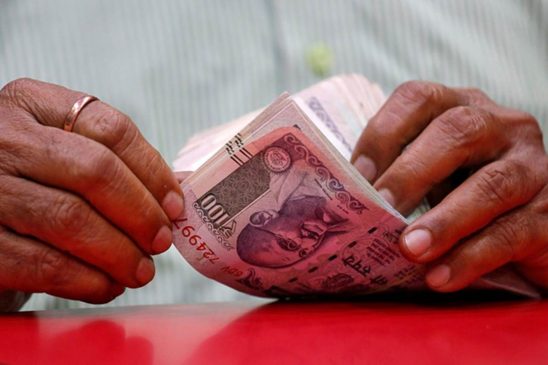‘Bankers are just like anybody else, except richer’ is a famous if irreverent poem on the profession, written by the irrepressible Ogden Nash. While that title holds good in India as well, some bankers, it appears, are richer — way, way richer — than others.
Dinesh Khara would be able to testify to that.
Khara heads India’s largest lender, State Bank of India (SBI). He is a powerful man, overseeing assets to the tune of Rs 28.18 lakh crore and loan disbursals of over Rs 50,000 crore in a year. But Khara, who earned an annual salary of Rs 34 lakh in FY22, may not be laughing all the way to the bank. While Rs 34 lakh is a decent pay package for a government-run entity, it pales in comparison with the compensation earned by Khara’s private-sector counterparts in the business of lending. For instance, HDFC Managing Director and CEO Keki Mistry took home a gross package of Rs 19 crore in the financial year 2022. HDFC’s total assets under management (AUM) stood at Rs 6.53 crore as on March-end.
Private bank chiefs
The salaries of the top five private bank leaders, excluding ICICI Bank, ranged between 2.3 crore to Rs 7.1 crore per annum, including perks, in FY21. Private banks are yet to release their FY22 annual report. This story has used the latest numbers where available. Other numbers will be updated as they become available.
The stark difference in the annual salaries of public and private sector bank executives is due to private banks’ performance incentives being attached to their annual remuneration.
The widening divide in salary between top officials in public sector banks (PSBs) and their counterparts in private sector banks and large non-banking financial companies (NBFCs) continues to highlight the wage problem in India’s state-owned banks.
A private bank chief’s salary will be dependent on multiple factors, such as the performance of the bank, including net profit, the performance of subsidiaries, and dividends, among others. The private bank heads also have equity stock ownership plan (ESOP) perks, which are not available in PSU banks.
For example, HDFC Bank granted former MD Aditya Puri a total quantum of 406,140 employee stock options for the performance year 2019-20, basis of approval by the RBI. HDFC Bank Executive Director Kaizad Bharucha was granted a total quantum of 153,300 employee stock options for the performance year 2019-20, while Sashidhar Jagdishan, who took over as HDFC Bank MD and CEO from October 27, 2020, received a total of 260,000 employee stock options.
“The quantum of grant reported for him (Jagdishan) pertains to the grant received in his erstwhile role of Group Head of the Bank during the financial year 2020-21, prior to his appointment as Managing Director and Chief Executive Officer,” HDFC Bank’s FY21 annual report said.
Axis Bank MD & CEO Amitabh Chaudhry received a basic salary of over Rs 3.8 crore in FY21, leave fare concession facility of Rs 10 lakh, house rent allowance of Rs 1.07 crore, and perquisites, excluding ESOPs, of Rs 84 lakh, among others.
“Amitabh Chaudhry was granted 16,55,000 stock options, under the Employee Stock Option Scheme of the Bank, since 1 January 2019 being the date of his appointment as the Managing Director & CEO of the Bank….Further, 8,64,500 stock options remain unvested, as on 31 March 2021,” said Axis Bank’s annual report.
Kotak Mahindra Bank, on the other hand, paid Rs 1.8 crore to its Joint MD Dipak Gupta in FY21 with another Rs 1.5 crore as an annual incentive.
“For Mr Uday Kotak and Mr Dipak Gupta, the Annual Incentive includes an amount of ` 8,500,000 for FY 2018-19, approved by the RBI on 6th July 2020 and 7,000,000 for FY 2019-20, as approved by RBI on 26th March 2021,” the bank said.
IndusInd Bank MD & CEO Sumant Kathpalia earned Rs 1.6 crore in annual salary in FY21 and received other allowances amounting to Rs 5.4 crore.
Apart from HDFC, PSU bank heads also earn less than the chiefs of prominent NBFCs such as Bajaj Finance and Mahindra & Mahindra Finance, who paid their leaders over Rs 3.8 crore and over Rs 9 crore, respectively, in remuneration last fiscal year, excluding ESOP grants.
Size doesn’t matter
Khara’s remuneration is lower than the Rs 40 lakh that his peer, Bank of Baroda MD & CEO Sanjiv Chadha, earned in the same period, the banks’ annual reports showed. For FY22, Chadha earned Rs 38.19 lakh as annual salary and Rs 2,27,191 in perquisites, while Khara earned Rs 27 lakh in basic pay and Rs 742,500 as dearness allowance.
On a consolidated basis, the salary of the top 5 PSU public sector bank leaders in FY22, excluding Punjab National Bank (PNB), ranged between Rs 34 lakh crore and Rs 40 lakh crore.
The salary of whole-time directors (WTD) of PSU banks and other senior officials has to be based on composite performance parameters of the individual and bank, a senior private sector bank official told Moneycontrol.
As per the RBI’s report on trends and progress of banking in India, released on December 28, the gross non-performing assets (GNPA) ratio of all scheduled commercial banks (SCBs) moderated to its lowest level in six years, aided by efforts towards recoveries and technical write-offs.
As of September end, the GNPAs of scheduled commercial banks fell to 6.9 percent from 7.3 percent as on March 31, 2021. Private banks’ GNPAs fell from 5.5 percent in FY20 to 4.9 percent in FY21, while PSU banks’ GNPAs reduced to 9.1 percent in FY21 versus 10.3 percent a year ago.
“Asset quality improved, partly attributable to imposition of the asset classification standstill. Public sector banks (PSBs) reported net profits after a gap of five years. More generally, the capital position of banks improved, aided by recapitalisation by the government as well as raising of funds from the market,” the RBI said.
Apart from most PSBs posting profits in FY22 on an individual basis, SBI’s standalone net profit rose 55% in FY22 over the previous year to Rs 31,676 crore, on the back of stable net interest income and controlled slippages.
“During FY22, your Bank’s gross non-performing assets (NPA) came down by Rs 14,366 crore to Rs 1,12,023 crore. Recoveries and upgradation during the year increased by 21.58% to Rs 21,437 crore. Consequently, the gross NPA ratio of the Bank improved by 101 bps from 4.98% in March 2021. The net NPA of the Bank also improved to 1.02% as of March 2022,” SBI’s annual report said.
“The talent crunch (at PSU banks) can be solved if the Board is also permitted to recruit wholetime directors (WTDs) from the market. Today, these are selected only from public sector banks,” the official said.
“The RBI has issued detailed guidelines for computation of the compensation for wholetime directors of private sector Banks, which include the fixed and variable portion of the compensation. The variable portion also includes ESOPs and cash incentives and the same guidelines should be made applicable for the compensation of WTDs of PSBs too,” the official added.
A senior union leader, however, had a different view on the subject.
“Private banks’ motive is to make a profit, while PSBs’ objective is broad-based economic development and making banking credit and services accessible to all, at affordable prices,” said CH Venkatachalam, General Secretary, All India Bank Employees Association.
There is more security in a PSU bank role but the need for a pay hike is being felt of late as the top job has become stressful now, especially in the face of heightened competition, he added.
(This story will be updated with private bank chiefs’ latest salaries once the figures are out)





































